How to disassemble a split system with your own hands: features and procedures
Most of the classic split systems are mounted in a standard way, when the internal module is placed indoors, and the external module, respectively, outside the room. Both modules are connected by a piping system and an electrical circuit.
Meanwhile, along with installation, in certain situations, dismantling of the split system is required by the owner himself. How to solve this problem with your own hands without prejudice to the dismantled equipment? Consider in our material this point in detail.
We also dwell on the reasons for the dismantling of equipment and preparatory work that must be performed before replacing the outdoor and indoor units of a used split system.
The content of the article:
Reasons for dismantling a household split system
It would seem that the obvious and main reason for the decommissioning of the air conditioner modules is the complete expiration of the declared life of this equipment.
Indeed, it’s best to replace a used climate device with a new one. And this practice is quite common among owners of used air conditioners.
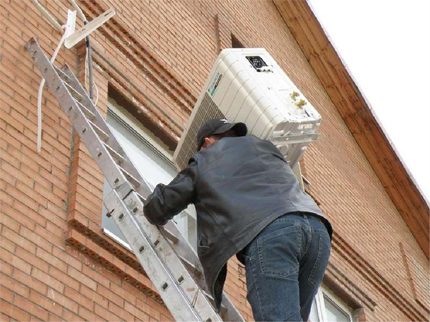
Meanwhile, it is also necessary to dismantle the split system if the main technological equipment, for example, a refrigeration compressor, fails. We recommend that you familiarize yourself with compressor diagnostic methods and repair tips.
This can happen at any time, regardless of the established terms of operation. In any case, it becomes necessary to dismantle the external unit of equipment.
It is not ruled out the removal of air conditioning units and in order to transfer the system to another installation site. For example, when a device owner changes one residence to another.
Such an option for dismantling, albeit infrequently, but is noted in everyday life.In any case, to independently dismantle the air conditioner without spoiling the equipment, you need to have certain knowledge.
What do you need to know before starting work?
People who have set themselves the task of dismantling a split system with their own hands, at a minimum, need to know the device (circuit) of such a system. In more detail about the device of the internal block we spoke here.
In addition, one should take into account such a moment: the operating components of the equipment are under high pressure of freon - a gas that is hazardous to health.

Also, the subject of study should be the electrical circuits of the air conditioning device, especially if it is supposed to reassemble the device in another place after the dismantling is completed.
Finally, appropriate technical skills and the ability to master the fitter's, electric, and special tools are needed.
The production of works aimed at removing the internal and external modules does not end only by disconnecting these modules and removing them.
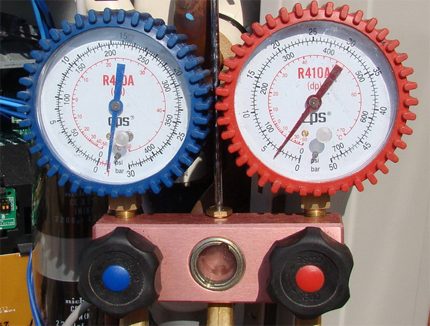
After disconnecting and disassembling, each of the modules must be reliably sealed along the lines of the freon circuit. This is done in order to prevent particles of dirt and dust from entering the contour.
The simplification of dismantling works is facilitated by the knowledge of the classics of mounting split systems. Traditionally, the working modules - internal and external - are positioned as close to each other as possible, despite the fact that the two components are separated by a wall (several walls).
The length of the contour line during classic installation, as a rule, does not exceed two meters. This is a characteristic indicator for household systems.
The pipelines of the circuit are placed in insulation (each separately), are grouped together with an electric cable, and a working line connecting the two modules is built through the channel.

A smaller diameter pipe is the compressor refrigerant discharge line. Accordingly, the larger tube is the refrigerant suction line.
Each of the tubes is connected to the external unit through system valves. Moreover, one of the valves, as a rule, of the suction line, is necessarily equipped with a service port.
The so-called service port is a regular pipe outlet with a thread onto which the nozzle of the filling hose or the hose fitting of the gauge station is screwed. This branch (service port) is useful in the process of dismantling the system.
Detailed dismantling instruction
So, if all of the above is taken into account, you can start work related to the decommissioning of the air conditioner and its subsequent removal from its “workplace”. Consider this process step by step for a better understanding and presentation.
Step # 1 - freeing the system circuit from the refrigerant
It is strictly forbidden to try to free the working circuit of the installation from freon by the banal method - the release of refrigerant into the environment.
Only a person "far" from the topic can use the technique when it is enough to loosen (partially unscrew) any nut securing the contour pipes and in this way release the freon out.
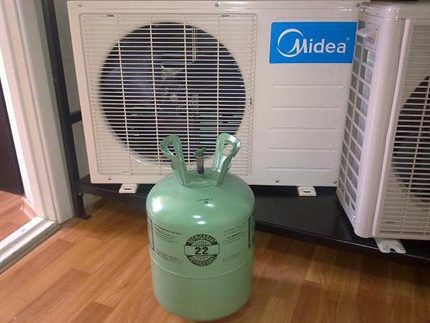
Everything is made much simpler by collecting freon in the air conditioner condenser.Moreover, the same freon is successfully used at a new installation site. That is, there is not only a simple procedure for freeing the circuit from the refrigerant, but also a saving factor for freon.
Therefore, in order to free the system, it is necessary to close the valve on the discharge line when the air conditioner is operating in cooling mode. A hex key is used to rotate the valve stem. First you need to remove (unscrew) the protective brass cap of the valve.
In this mode, the split system will work until the low pressure protection trips. However, it is recommended that you use a gauge station to be able to control the pressure in the circuit. Gauge station include on the appropriate service port.

After the residual pressure in the circuit is the minimum possible (0 Bar), you need to turn off the air conditioner if the protection does not work.
Wait a while and if the pressure in the circuit rises, repeat the procedure. Thus, the refrigerant is completely removed from the working circuit directly to the condenser of the device.
At the final stage:
- close the valve on the suction line;
- remove gauge station;
- unscrew nuts securing copper tubes.
Then you need to seal the bends on the valves and seal the ends of the disconnected tubes.
Step # 2 - disconnecting electrical circuits
Now that the circuit is free of refrigerant, it is logical to carry out work on the dismantling of electrical circuits. In principle, each unit has an electrical connection diagram, which is usually located on the back of the valve block cover of the outdoor module.
If the circuit is missing or there are any doubts about the connection, it is recommended to sketch the pinout in the disconnection process.

Disconnect the electrical conductors of the outdoor module should only those that come to the external module from the indoor module. Also, most likely, you will have to turn off the network supply, given that in most cases this line runs inside the buildings.
After disconnecting the required circuits, you can proceed directly to the removal of the outdoor module from the metal brackets.
Step # 3 - removing the internal and external modules
The order of removal of the modules - internal and external - is not critical. However, it is recommended that you first remove the outdoor unit.
To perform the removal operation of a completely disconnected external module, you need:
- unscrew the bolts on the support brackets;
- tie the module with a reliable transportation rope (if at a height);
- gently slide from the brackets and lower it to the ground;
- dismantle the support brackets.
Next, go to the internal module. Here, before removing the indoor unit directly, the place of transition of the copper pipes of the circuit and electrical conductors is gently freed from obstacles.
If possible, it is recommended to remove the wiring from the junction.
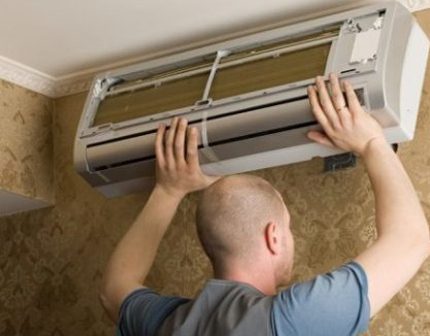
The indoor unit of a household split system, as a rule, is fixed to the mounting plate included in the installation kit. Moreover, the mounting is carried out by the method of suspension without additional fasteners.
Therefore, to remove the block, it is enough to apply a small pulling force "on yourself" and then slightly raise the module up.
The unit removed from the mounting plate remains attached to the copper tubes of the circuit.Unscrew the fixing nuts and disconnect the tubes. It should be noted that this work has to be carried out on weight.
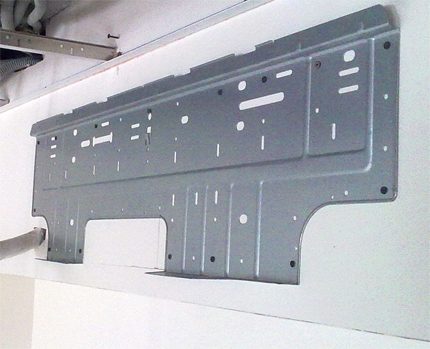
You may need a stand or help from a neighbor, friend, or acquaintance. After disconnecting, be sure to seal the pipe joints.
Finally, it remains to dismantle the mounting plate of the indoor module from the wall, remove copper tubes and other connection accessories from the transition in the wall. On this, the dismantling of the household split system can be considered completed.
But eating is not always necessary. If it is a breakdown or repair, then often you can fix everything without removing the split blocks. So, if you are faced with the fact that the split system flows into the room, then you will not have to remove the equipment in this situation. You can find the cause of the breakdown and fix it yourself.
How to do this correctly and what procedures it is advisable to regularly perform when servicing the system, we examined in detail in the following articles:
- What to do if the split system flows into the room: common breakdowns and how to fix them
- Maintenance of split systems: do-it-yourself cleaning, repair and refueling of HVAC equipment
Conclusions and useful video on the topic
The video demonstrating the dismantling procedure will be an additional help for people who want to remove the system with their own hands.
The video clearly demonstrates all the subtleties of the execution of work:
Solving the problem of removal (dismantling) of a household split-system with one's own hand is a completely feasible process. The main thing is to have an idea about the arrangement of such equipment and how it is installed. Obviously, the dismantling will be performed in the reverse order.
Engaged in the installation, replacement, repair and maintenance of split systems and repeatedly removed the equipment and put it back? Share your secrets of dismantling with newcomers to this business - leave recommendations below under this article.
If this is your first time removing split-system blocks and you have questions that we did not discuss in this material, ask them to our experts and other site visitors.

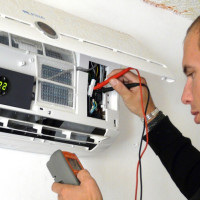 Do-it-yourself split-system repair: the main breakdowns and how to fix them
Do-it-yourself split-system repair: the main breakdowns and how to fix them 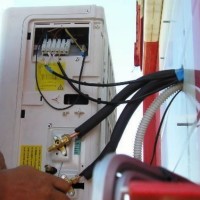 How to connect the air conditioner to the network with your own hands: cable routing + step-by-step instructions for connecting the indoor and outdoor unit
How to connect the air conditioner to the network with your own hands: cable routing + step-by-step instructions for connecting the indoor and outdoor unit 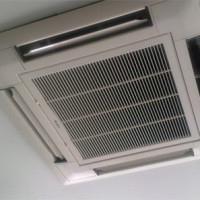 Cassette split system: design features, pros and cons of technology + installation nuances
Cassette split system: design features, pros and cons of technology + installation nuances 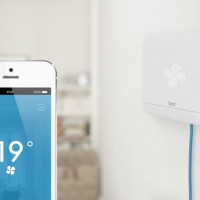 TOP-12 Wi-Fi split systems: overview of popular models among customers + selection features
TOP-12 Wi-Fi split systems: overview of popular models among customers + selection features  Inverter split systems: ranking of the best models in today's market
Inverter split systems: ranking of the best models in today's market 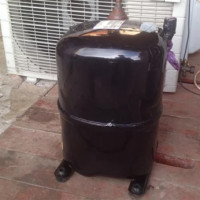 How to check the air conditioning compressor of a split system: nuances of diagnosis + tips for failure
How to check the air conditioning compressor of a split system: nuances of diagnosis + tips for failure  How much does it cost to connect gas to a private house: the price of organizing gas supply
How much does it cost to connect gas to a private house: the price of organizing gas supply  The best washing machines with dryer: model rating and customer tips
The best washing machines with dryer: model rating and customer tips  What is the color temperature of light and the nuances of choosing the temperature of the lamps to suit your needs
What is the color temperature of light and the nuances of choosing the temperature of the lamps to suit your needs  Replacement of a geyser in an apartment: replacement paperwork + basic norms and requirements
Replacement of a geyser in an apartment: replacement paperwork + basic norms and requirements